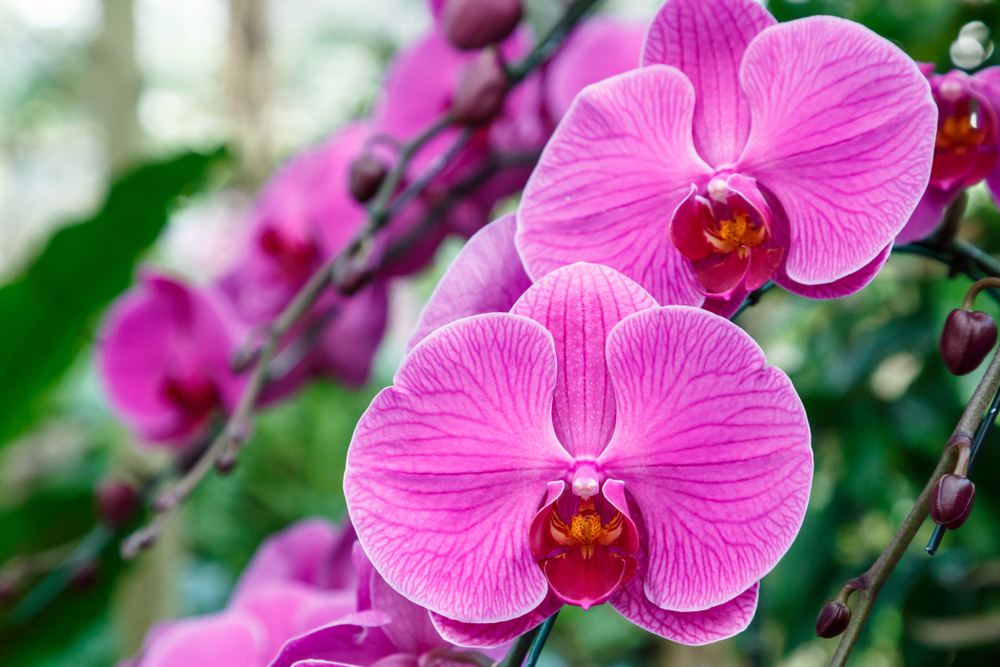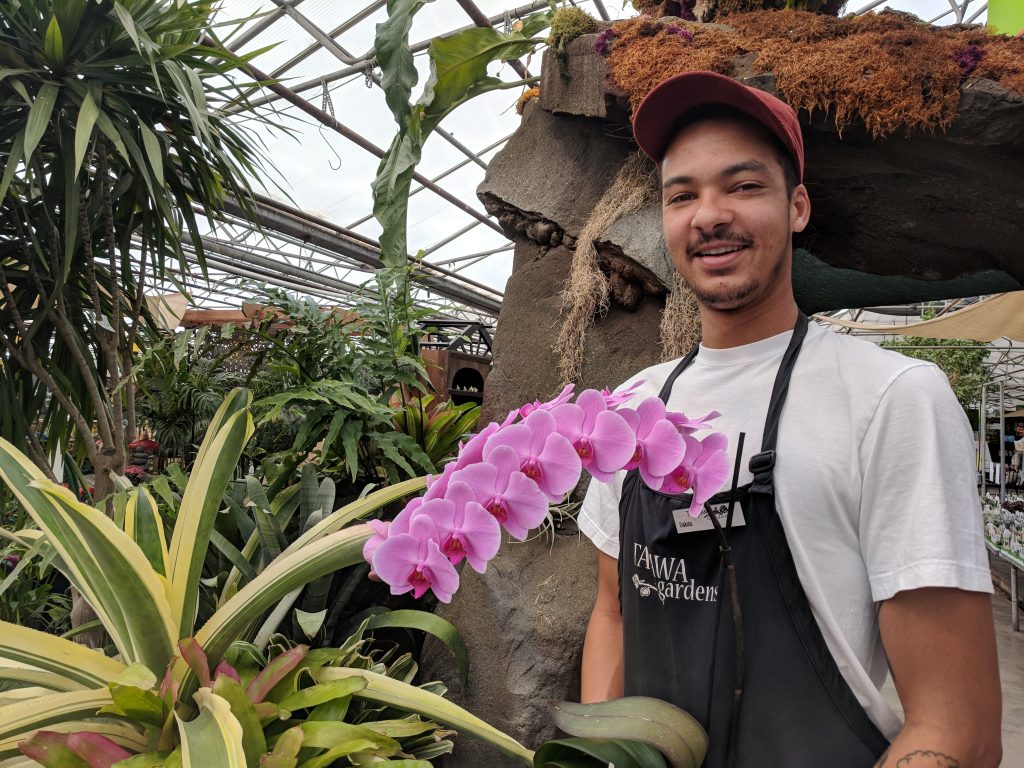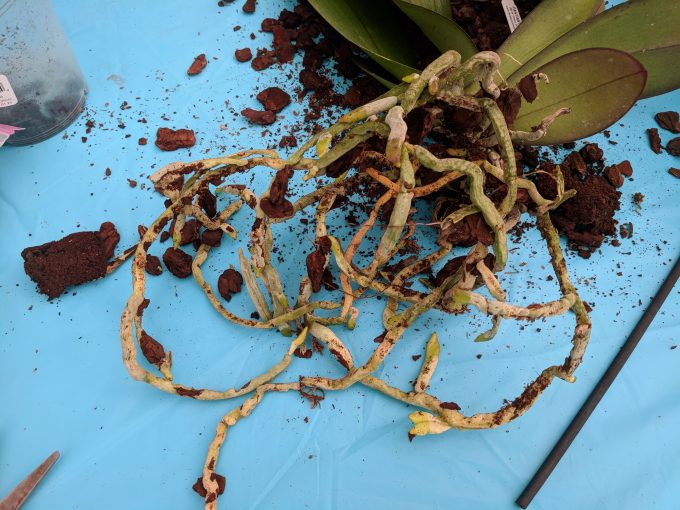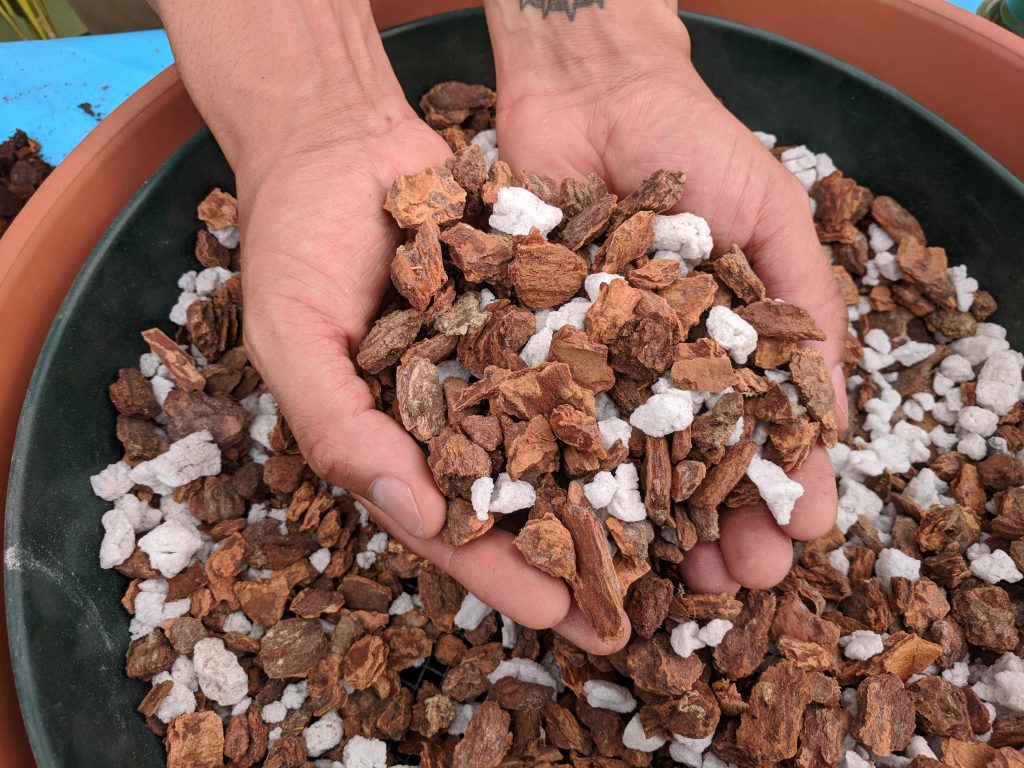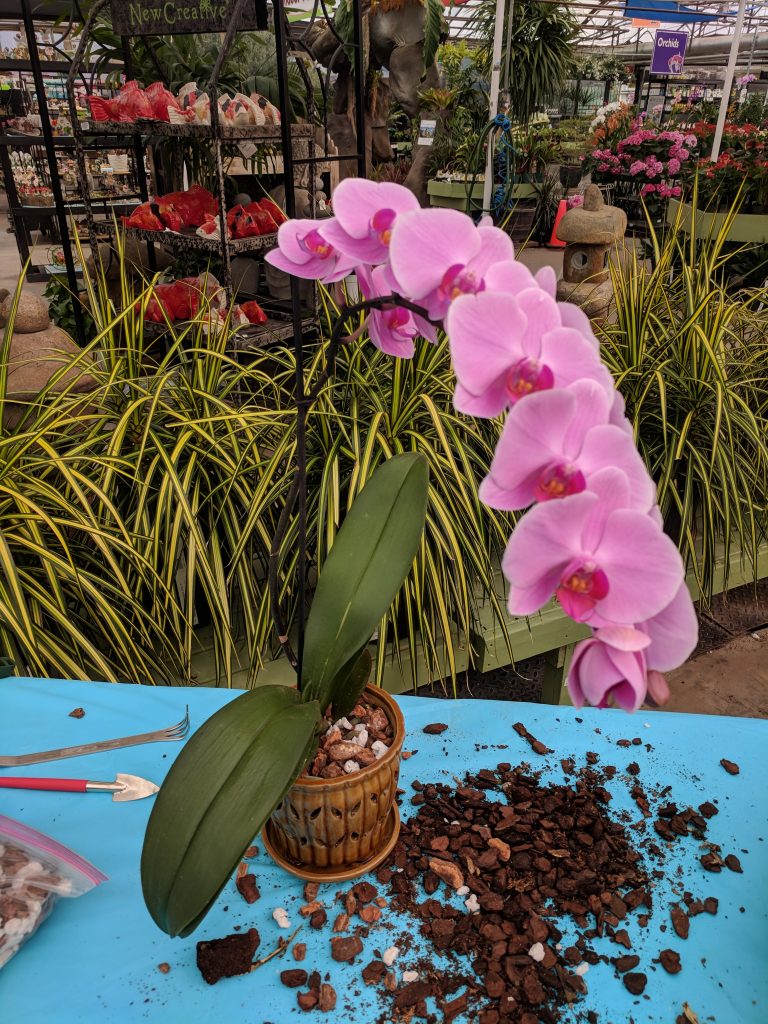Most of us would agree that orchids are amazing plants, with flowers that are stunning and other-worldly. They can take our imagination to exotic far-away places. With a little help from Tagawa Gardens, orchids aren’t all that hard to take care of. If you need one more reason to grow orchids, just look at how quick and easy they are to repot!
Meet Dakota, Tagawa’s orchid poobah!
Dakota is the Supervisor of Tagawa’s Houseplant Department. I asked him to show me step-by-step how to repot an orchid. If he hadn’t been stopping to let me take pictures, it might have taken him a whole five minutes, start to finish. Not a big project! And certainly nothing to be afraid of.
How do you know when it’s time to repot?
The roots will tell you if they need help. Gently knock the plant out of its pot. If the roots are crowded or several of them are crisscrossing each other, it’s probably time to repot.
Note: many of the orchids in Tagawa’s Houseplant Department are epiphytes. They live up off the ground, attached to other plants like trees for support. Even when we grow them in pots, it’s natural for these orchids to send rambling roots outside of the main root ball. That’s usually a sign of a happy, healthy orchid and doesn’t necessarily mean the plant is too crowded.
Tickle and tease away the old planting medium
You’re likely to find that the “soil” around your orchid isn’t really soil at all. It’s more of a planting medium made up of chunks of bark and a fast-draining material like perlite.
Wiggle the roots gently until all of that old medium has fallen away and the roots are open and easy to see and work with.
Out with the old….
It’s natural for orchids to have some roots that die off over time. They’ll be flat, shriveled and soft rather than plump, firm and pale green.
Cut away the old roots with clean, sharp scissors. That will leave only healthy, vigorous roots ready for their new home!
You may find a little surprise inside…
As you’re removing the old medium from the roots of your orchid, you may find a little cage-like pot at the very center of the root ball, especially if the orchid has never been repotted before.
This little cage and the special soil inside were used to help the orchid root as a tiny cutting. Gently wiggle away the cage and the soil inside it. Your orchid doesn’t need them anymore.
Use only new, clean, high-quality potting medium
These epiphytic, above-ground dwelling orchids want to grow in a “soil” that is very loose, open and quick-draining. Never reuse the old medium that you’ve removed from your crowded orchid rootball.
Tagawa’s sells top-quality orchid mix that will be “purr-fect” for repotting. As long as the pot you’re orchid was growing in is clean and has excellent drainage, it’s probably fine to reuse the same container. A larger pot may not be needed.
We’re almost done…
Put a couple of inches of orchid mix into the bottom of the pot, then settle the orchid and its roots back into place.
Backfill with more orchid mix, using your fingers to tuck the chunks of bark gently but firmly down between the roots. The crown of the orchid, where the stem and the roots meet, should sit right at the top of the mix.
If the plant had a stake supporting a flower spike, insert the stake into the pot and reattach it to the spike. Don’t forget to tuck the orchid’s i.d. tag back into the pot.
Mission accomplished!
With your orchid’s roots now invigorated and refreshed, give your plant a deep, drenching drink… ’til water pours out of every opening in the pot.
Your plant can go back into its proper light right away. Dakota recommends holding off on fertilizing for a couple of weeks until any stress from the repotting has passed.
Come see Dakota and his friendly crew in Tagawa’s Houseplant Department. Bring pictures of your orchids and any questions you might have.
And if you don’t have any orchids yet, take a look at Tagawa’s beautiful selection of these tropical beauties. There may be one just waiting to go home with you!
